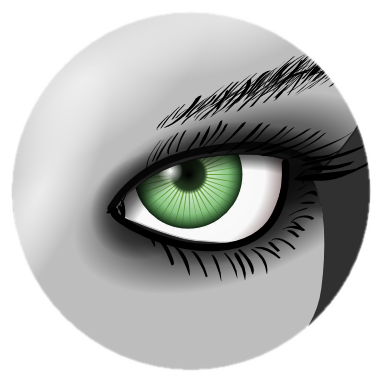

This should fix your broken texture issue. Try replacing the spaces with _underscores_ or format your naming inCamelCase. Now I think the reason your material to obj link is broken is because of the spacing in your file naming. More photos which are as sharp as possible and with a higher resolution and studio lighting would improve the surface reconstruction. The reason your model is a bit blobby is that the surface properties of your subject are relatively feature poor, not providing a lot of information to Zephyr to reconstruct with, which requires you to work harder to get compatible results to reality. Hey Shopgeezer, in Zephyr you don't have the 3D light turned on, you're only seeing the flat un-illuminated texture map - To see the actual 3D geometry in Zephyr you need to click on the lightbulb icon in the tool-bar. So why did the presenter's mesh in the video look fine in MeshLab, and my mesh file looks like a pile of whipped cream? What are the materials definitions that MeshLab is looking for? Is this a problem in the export function in Zephyr? I followed all the options that the presenter in the video used. All of it seems to be the "white material". My object in MeshLab looks like a blob of clay. A default white material is used where no material was available". " Some materials definitions were not found. obj file but when I opened it in MeshLab I got the following error: His mesh in MeshLab looks just like it did in Zephyr, same colours, textures etc. In the video the presenter then exports the mesh as a. I managed to get a good looking textured mesh made in Zephyr.

I did exactly what the presenter did in the video. I followed the online Workflow tutorial video as I created my own mesh. I took 50 photos of my subject, 43 of which were accepted by Zephyr. On the Draw 3D Meshes toolbar, click the Revolved Surface tool.ģ Select the entity to be used as the axis of revolution.ĥ Specify the number of degrees to revolve the entity.Hi to the group.On the menu, choose Draw > 3D Meshes > Revolved Surface.On the ribbon, choose Draw 3D > Revolved Surface (in Draw 3D Meshes).Ĝhoose Entity and press Enter to select an entity that determines the axis.ġĝo one of the following to choose Revolved Surface ( ):.Specify a start point and an end point.On the Facet Model Meshes toolbar, click the Revolve tool.ģĝo one of the following to define the axis of revolution:.On the menu, choose Draw > Facet Model Meshes > Revolve.On the ribbon, choose Draw 3D > Revolve (in Facet Model Meshes).The N-Direction Mesh Density value determines the mesh density (the number of mesh segments) in the N-direction (along the axis of revolution).ġĝo one of the following to choose Revolve ( ): Note that the Number Of M-Direction Surfaces value determines the mesh density (the number of mesh segments) in the M-direction (around the axis of revolution). They are similar to solids but are more lightweight and don’t have mass properties. ğacet model meshes are smart meshes that can be modified with advanced features such as boolean operations.

You can create two types of revolved meshes: Revolving the profile 360 degrees creates a closed three-dimensional mesh. You also specify the starting angle and the number of degrees to revolve the profile. You select the two entities that define the profile and the axis. You can create a revolved mesh, which is a three-dimensional polygon mesh that approximates the surface generated by rotating a two-dimensional profile around an axis.


 0 kommentar(er)
0 kommentar(er)
